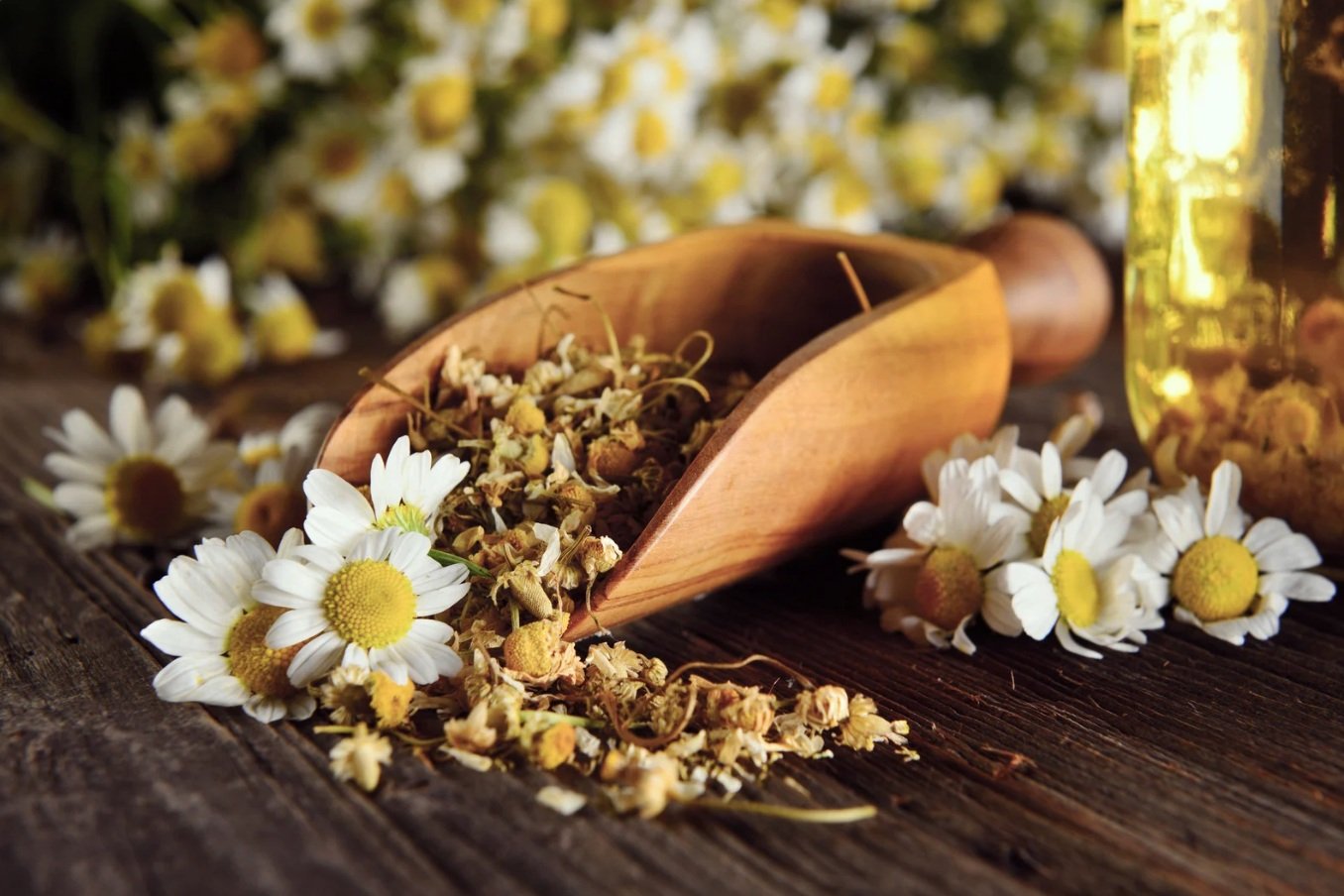Chamomile: The Calming Herb
CHAMOMILE - Matricaria recutita
A while back, I wrote a whole blog series on the different herbs you can find in a southern kitchen garden. Here are links to a couple of my posts - Oh Hello. My Name’s Oregano and How About Some Bossy Basil? There’s a bunch more - 13 in all. Totally worth a read.
One herb that I didn’t include at the time is Chamomile. Chamomile is part of the Asteraceae plant family and has been around for a really long time. In fact, both the Romans and the Egyptians used Chamomile for medicinal purposes. It was used to calm the skin, reduce fever, treat headaches, manage pain and help with fatigue. Chamomile is still used for many common ailments like calming nerves, reducing inflammation, helping with insomnia and lessening rheumatic pain.
There are 2 different varieties of Chamomile - Roman Chamomile and German Chamomile. Both have feathery foliage and small flowers that look a little like daisies. Roman Chamomile is a creeping evergreen perennial. It grows about 4 to 10 inches high and can be used as a ground cover or between stepping stones. When you walk on it, Roman Chamomile smells really good!
German Chamomile is what’s used to make Chamomile Tea. German Chamomile grows about 2 feet tall and smells a little like apples. Plant Chamomile in raised beds and containers about 8 inches apart where there’s full sun (although a little shade in the hot afternoons is helpful). Water about an inch a week. Use a bamboo stake or light trellis if your Chamomile gets top-heavy and starts to flop over.
Chamomile can be used fresh or dried. Harvest the flowers when the petals start to bend backwards just a little. And if you keep picking the flowers, then you’ll get more blooms.
TIME TO EAT
Well it’s more about drinking than eating, even though Chamomile flowers are edible. When most of us think of Chamomile - we think of tea - either hot or cold. The flower heads are what’s used. Just snip off the flowers leaving most of the stem intact to encourage more flower buds. Use about 3 teaspoons of fresh Chamomile flowers for a 6 to 8 ounce serving of tea (1 to 2 teaspoons if using dried flowers). Put the flowers into a teapot or glass jar and pour boiling water over the top. Let the flowers steep for about 5 minutes - but no longer or the flavors will turn bitter. Strain into a cup for serving and use a little honey to sweeten. You can also combine Chamomile flowers with other herbs (like mint) for a different flavor.
BET YOU DIDN’T KNOW
Chamomile tea can be found on most grocery shelves in every part of the world. The word Chamomile is Greek and loosely translates into “ground apple”, which makes sense because it smells a little like sweet apples.
And here’s something else. Remember the cacao body butter recipe I shared - Body Butter & Brownies - Because They Go Together? You can add Chamomile to the body butter and enjoy its soothing and calming properties on your skin. You’ll need about a cup of dried Chamomile flowers to infuse the almond oil. Use a dehydrator or air dry the flowers until they are really dry and crunchy. Place the dried flowers in a glass jar and add the almond oil. Seal the jar, shake it lightly and place in a dark place for about 2 weeks. Shake the jar every couple of days. After 2 weeks, strain the oil and proceed with making the body butter. Enjoy!
Learn about some other herbs that are known for their anti-inflammatory properties when you grab my FREE downloadable PDF Guide to 24 Inflammation Fighting Foods You Can Grow Yourself. Even if you don’t grow them yourself, you’ll learn what makes these herbs special.




